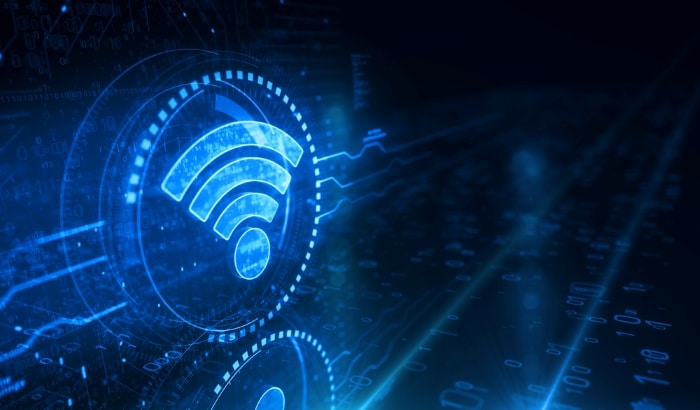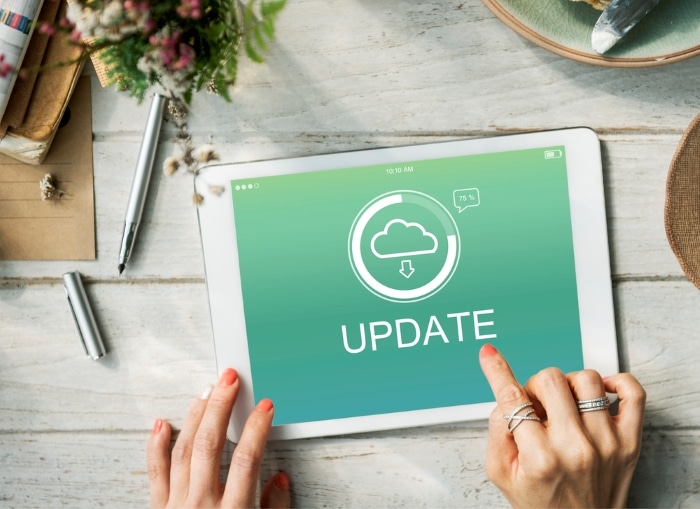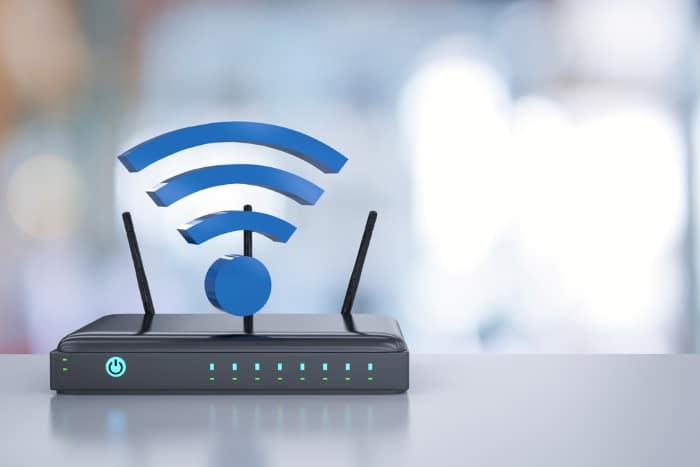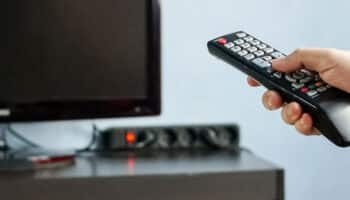We've independently reviewed this article to make sure it's as accurate as we can make it.
To find out more about our article creation and review process, check out our editorial guidelines.
Do your TV and Alexa seem to be having trouble communicating?
That sucks, but you might find comfort in knowing that you’re not alone and that the issue is actually a common thing to have happen.
I know how annoying it can be to have 2 of your favorite devices fail to work together – especially when you had a whole evening planned around watching a show you live.
But don’t worry; you’ve come to the right place for answers. Below, you’ll find 8 fixes and settings you can try to get everything back to normal and stop any connectivity issues you’re currently experiencing.
When Alexa is not turning on your TV, my usual advice is to check your Alexa settings, verify your connections, and try a simple restart or a software update. You can also look at the devices separately, check your router’s age and settings, and reset/reconfigure the devices.
Read on to get your Alexa and TV working together again!
Why trust us? This article was written by Craig Anderson and Austin Sharman.
Craig has helped thousands of other homeowners repair their appliances since 2016.
Why Alexa And Your TV Aren’t Getting Along
There are many possible reasons why your Alexa and TV aren’t working together as seamlessly as you’d expect them to. In some cases, the solution can be as simple as tweaking a few settings, while in others, you’ll need to call a professional for help.
Here’s what I recommend you try to fix the problem.
#1 Check Your Alexa Settings
When Alexa is not turning your TV on, I find it’s a good idea to start by checking some settings. While Alexa devices are typically set up to work with any TV and configuring them is relatively easy, sometimes certain settings can be accidentally changed due to bugs or user error.
Solution: Double-check your Alexa settings to ensure it’s ready to connect to your TV and work normally. There are several online resources with detailed instructions on pairing or re-pairing both devices quickly.
#2 Verify Your Connections
After ensuring that your TV and Alexa device are set up to work together, you must also check that they’re connected to a stable network through which they can communicate.
From what I’ve seen, even using different networks from the same router can create communication problems between both devices, so it’s worth double-checking that as well.

Many modern modems and routers have 2 different signals, one transmitted at 2.4 GHz and another at 5 GHz. The former has a larger range but slower speeds, whereas the latter is faster but at the cost of range.
Solution: Go into your TV and Alexa settings and see what network they’re connected to. If you notice the devices are connected to different networks, reconfigure them to use the same one.
#3 Restart the Devices
If Alexa is not turning on your TV after having worked normally for a long time, I’ve found that something as simple as a quick restart can fix everything.
Most people control their TVs through the Alexa app, which allows for easy commands and is very user-friendly overall. If you’re one of those people, I recommend removing your TV from the Alexa app and adding it again afterward.
Sometimes, bugs and glitches can cause background processes in your devices to crash, resulting in performance drops, poor connectivity, and more. By removing your TV from the Alexa app, you’ll be addressing any corrupted files and bugs directly and giving your devices a chance to start from scratch.
Solution: If you’re not sure how to remove your TV from the Alexa app, here are some simple steps you can follow:
- Open the Alexa app on your phone/tablet.
- Tap on the “More” button (the three horizontal lines), and then select “Settings”.
- Select TV & Video, and then select your TV.
- Select “Disable Skill”.
Once your TV has been unpaired successfully, repeat the pairing process you did when you first linked the two devices together.
#4 Try a Software Update
If Alexa is still not turning on your TV, the next thing I recommend you try is to install a software update.
Software updates are key to ensuring all your devices work well independently and when paired. Updates also help boost performance, solve bugs and glitches, and offer new and improved features you can enjoy.

While automatic software updates are set by default in most modern devices, sometimes, things like bugs, glitches, and corrupted files can get in the way and prevent them from being installed. In such a case, there’s a good chance your TV and Alexa may stop communicating, as they’ll be working with “non-matching” software versions.
Solution: To check whether automatic updates are enabled in your Alexa device, please follow the steps below:
To determine what Alexa software version you have:
- Open the Alexa app.
- In the Main Menu, select “Settings”.
- Select your Alexa device.
- Look for “About” and write down the device software version that appears below that section.
To force a software update on your Alexa:
- Ensure your Alexa device is connected to the internet by asking something simple, such as, “What’s the Weather Today?“.
- Press and release the mute button (typically, it looks like a strike-through microphone or circle). Check that the mute light is activated.
- After a few minutes, your device will say it needs to perform a software update and install anything necessary.
TVs are less likely than Alexa devices to encounter software update issues. Just look carefully when an update prompt comes on to ensure you accept it.
#5 Check Your Echo Device
A big part of troubleshooting is looking at every element independently. If Alexa is not turning on your TV, I strongly recommend you check whether your Echo device alone is to blame.
The easiest way to tell whether your Echo device is at fault is to reset your TV by unplugging it from the wall outlet and plugging it back in. The process will reset many of the TV’s internal configurations, allowing it to start over with a clean slate.
If, after unplugging the TV, you’re still encountering issues, there’s a good chance your Echo device is what’s causing the problem.
In point #7, I’ll teach you how to reset your Echo device to get everything back to normal.
#6 Check Your Router
When Alexa is not turning on your TV and you’re sure neither of your devices is to blame, a good idea is to check your router/modem.
As with everything related to technology, there are new advancements every day in routers, and their connectivity capabilities are frequently improved. Such improvements are one of the main reasons your service provider recommends you let them come to your home to replace the modem every few years.

If your modem is old (+3-4 years), there’s a good chance it’s causing the issues between your TV and your Alexa device. And the same goes for your router (if you use one to boost your home’s Wi-Fi signal).
In my experience, even if your modem is a newer model, issues will surely arise over time if you use it with an outdated router.
Solution: It could also be that both your modem and router are still more than capable of handling newer technologies and networks, but they’re improperly configured.
In an ideal scenario, your internet service provider will have adequately set your modem and router to ensure the best performance upon installation. However, sometimes blackouts can mess with modem/router settings and restore them to default.
If you suspect your modem/router is not configured properly, I recommend you contact your internet provider for instructions on choosing the right settings. Alternatively, you can schedule a technician’s visit so they can handle the process for you.
#7 Reset/Reconfigure Your Devices
If a simple restart doesn’t work and Alexa is still not turning on your TV, you might need to perform a full-on reset to one or both of your devices.
The background processes that make your TV and Alexa device work can sometimes crash due to various issues, resulting in poor performance and connectivity difficulties between them. In such cases, and when all else fails, your best bet is to perform a factory reset.
Factory resets should only be used as a last resort, as they delete everything from your TV’s and Alexa device’s memory, including saved passwords, networks, preferences, color balancing settings, and more. In other words, your devices will be restored to the information and settings they had before you bought them.
Solution: The process to reset your TV will vary depending on the brand and model you own. Please refer to your User Manual or your manufacturer’s website to find the right steps. If you don’t have the manual handy, don’t worry; you can use our free resource below.
Once you’ve Factory Reset your TV, let’s move on to doing the same with your Alexa device. The following steps apply to 3rd and 4th-generation Echo Dots:
- Press and hold the “Microphone off” and “Volume Down” buttons at the same time for 20 seconds.
- Wait for the light ring to turn off and then back on.
- Your device will take a little while to reset back to factory defaults and then enter Setup mode.
To set up your Echo Dot again:
- Plug in your device.
- Open the Alexa app on your mobile devices.
- Tap “More” (the icon with three horizontal lines stacked on top of each other).
- Select “Amazon Echo”.
- Select your device’s name and follow the instructions given by the app.
#8 Call a Professional
Last, let’s talk about your options when all else fails, and Alexa is still not turning on your TV.
Sadly, if you’ve already tried everything on the list above and are still in the same situation, I’m afraid the issue likely requires a professional’s skill set. Certified IT technicians know how to navigate around a TV’s/Echo Dot’s programming and have special tools to diagnose and address a larger issue.
Best case scenario, the source of the problem lies with your Alexa device and not your TV. However, if the TV is to blame, the fault might be with the mainboard (also known as the motherboard) or the Wi-Fi daughterboard.
I strongly advise against opening up your TV to diagnose such potential issues, as you’ll be exposed to dangerous electrical components, including capacitors, which can hold a charge for months or even years.
It’s always best to leave the job to a professional.
How Much Do TV/Alexa Repairs Cost?
While there’s no cookie-cutter answer, there are some ballpark estimates I can provide you with to give you a clearer idea of what you and your wallet can expect.
- Replacing a TV’s mainboard typically costs between 30% and 70% of the TV’s original price.
- Replacing the daughterboard can cost between $20-$150.
You must ensure you’re getting the right replacement parts for your TV; otherwise, the repair will not be possible. Getting the right parts when it comes to TVs is easier said than done, as a single same-year model can undergo several part revisions, including different spare parts and components.
If you want to be sure you’re making the right purchases, my usual advice is to call a technician and get them to buy the parts for you. Typically, technicians will not only be able to get discounts from vendors and manufacturers but also offer cost of labor reductions if they misdiagnose an issue.
In most cases, you can expect to pay between $50-$250 in costs of labor, depending on the complexity of the problem and the technician’s initial rate.
Getting Alexa to Turn Your TV On
When Alexa refuses to turn your TV on, it’s understandable that you feel frustrated and confused about how to solve the problem.
Luckily, as I hope this piece has helped you better understand, addressing the most common causes behind your Alexa device not turning on your TV is often easy and quick. In most cases, something as simple as restarting both your TV and Echo Dot or similar devices will do the trick.
Thanks for reading. If this article was useful and answered your questions, please check out our other resources and free guides below and consider subscribing to our newsletter.
Have a great day!
-Craig.








